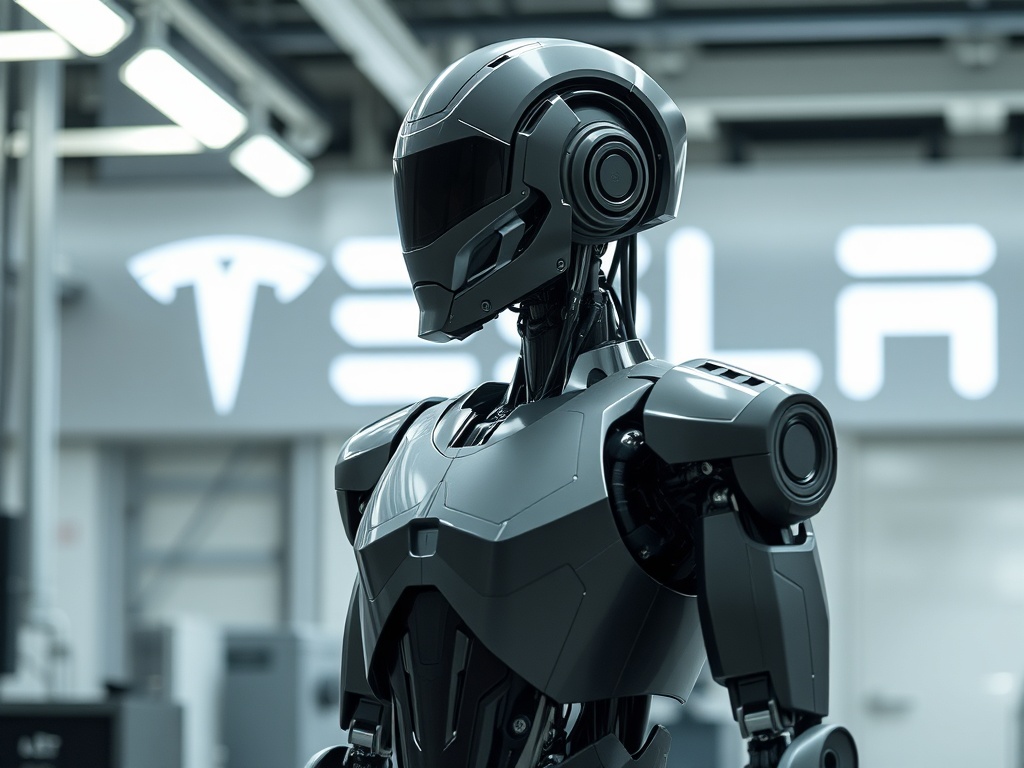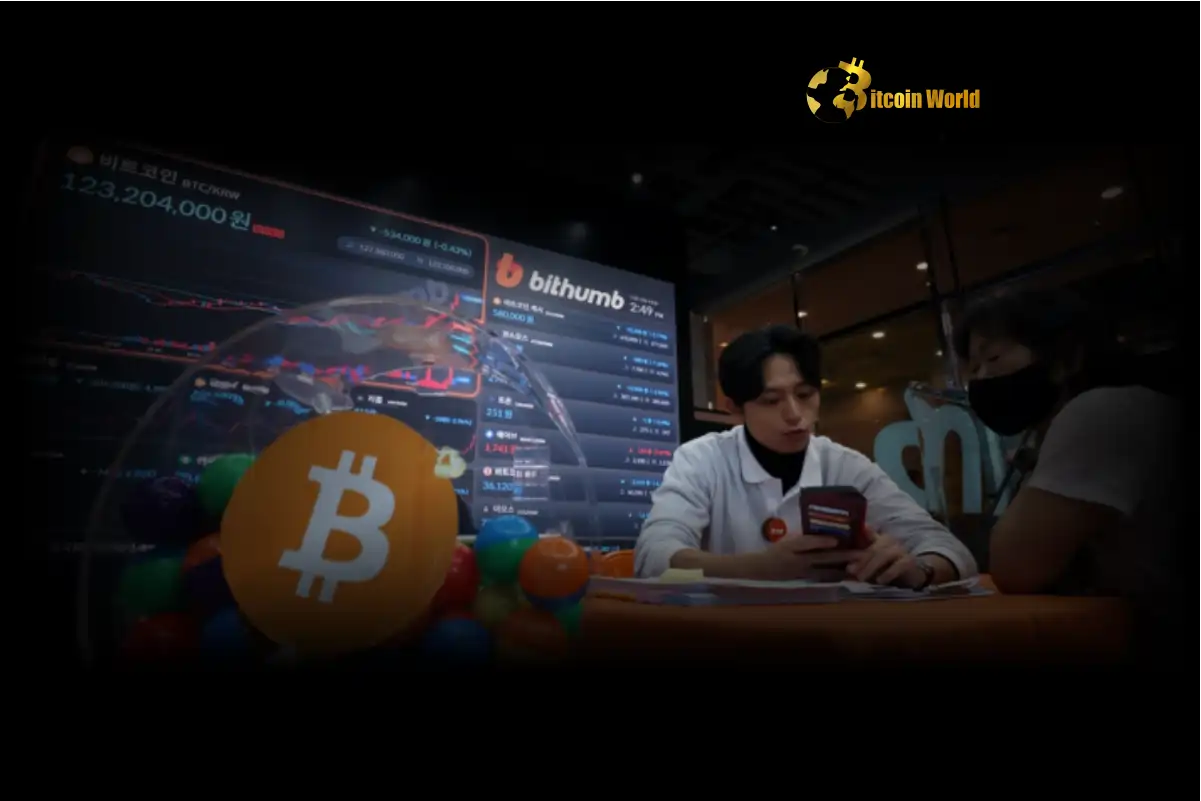BitcoinWorld

Tesla Optimus Production Faces Daunting Setbacks: What This Means for Humanoid Robots and AI Robotics
In the rapidly evolving landscape of technology, where breakthroughs in artificial intelligence and robotics capture the imagination of investors and innovators alike, the news from Tesla often takes center stage. For those keenly following the intersection of cutting-edge technology and market dynamics, the progress of projects like Tesla Optimus is particularly compelling. Recently, reports have surfaced indicating that Tesla is significantly behind its ambitious goal of producing 5,000 Optimus humanoid robots this year, a development that raises important questions about the pace of tech innovation and the challenges of scaling complex AI-driven hardware.
Tesla Optimus: A Bold Vision Meets Production Reality
Elon Musk’s vision for the Tesla Optimus bot has been nothing short of revolutionary: a general-purpose humanoid robot capable of performing repetitive, dangerous, or mundane tasks. The initial pledge for 2025 was to roll out 5,000 of these advanced machines. However, as the year progresses, sources close to the matter reveal that only a few hundred Optimus units have been produced. This stark contrast between aspiration and current output signals a significant hurdle in Tesla’s robotics journey.
This production shortfall comes at a challenging time for Tesla. The company recently reported a 12% decline in overall revenue for the second quarter, primarily attributed to a downturn in electric vehicle sales, reduced income from regulatory credits, and a dip in solar and energy storage sales. While these issues are distinct from the Optimus project, they collectively paint a picture of a company navigating complex operational and market headwinds.
During a recent earnings call, Musk acknowledged the ongoing development, stating that production of the latest Optimus 3 design would commence by early next year. He reiterated a long-term goal of scaling Optimus production to a million units annually, aspiring to achieve this within five years. Such ambitious targets, while characteristic of Musk, prompt a closer look at the feasibility of rapidly scaling highly sophisticated robotics.
The Evolving Landscape of Humanoid Robots: Is Tesla Lagging?
The field of Humanoid Robots is buzzing with activity, with numerous companies making strides in developing versatile bipedal machines. While Tesla’s Optimus garners significant media attention due to its creator, it operates within a competitive ecosystem. Companies like Figure AI, for instance, have announced plans to begin ‘alpha testing’ their humanoid robots in domestic environments in 2025, suggesting a focus on practical, real-world applications. Similarly, Apptronik’s humanoid robots are reportedly taking steps towards self-assembly, indicating advancements in autonomous capabilities and manufacturing processes.
Other players, such as Hugging Face, are making desktop-sized robots like the Reachy Mini accessible, democratizing robotics development. These diverse approaches highlight the varied challenges and opportunities within the humanoid robotics sector. Developing a humanoid robot involves intricate engineering, combining advanced mechanics, sophisticated sensors, and complex software. Mass production adds another layer of complexity, requiring robust supply chains, precision manufacturing, and rigorous quality control. The reported delays for Optimus are a testament to the immense technical and logistical hurdles inherent in bringing such advanced machines to scale.
AI Robotics: Bridging the Gap Between Vision and Deployment
At the core of Optimus, and indeed most modern autonomous systems, lies AI Robotics. The intelligence of these robots, enabling them to perceive, learn, and interact with their environment, is powered by advanced AI algorithms. While Tesla has made significant strides in AI for autonomous driving, translating that expertise into general-purpose humanoid locomotion and manipulation presents unique challenges. The real-world variability, the need for robust decision-making in unstructured environments, and the physical safety requirements demand an extremely sophisticated and reliable AI stack.
The current production figures suggest that integrating this complex AI with the physical hardware for mass deployment is proving more difficult than initially anticipated. It’s one thing to have a functional prototype or a small batch of units; it’s quite another to engineer them for high-volume manufacturing while maintaining performance and safety standards. These challenges underscore a broader theme in the tech industry: the gap between impressive proof-of-concept demonstrations and widespread, reliable commercial deployment. The success of AI robotics hinges not just on algorithmic prowess but on seamless hardware-software co-design and scalable manufacturing processes.
Decoding Musk Promises: A Pattern of Ambitious Projections?
For many observers, the Optimus production delay evokes a sense of déjà vu. Elon Musk is renowned for his audacious visions and ambitious timelines, but his track record also includes instances where projections have not materialized as quickly as promised. Recall Tesla’s 2019 Autonomy Day, where Musk famously predicted a fleet of a million robotaxis on the road by 2020. Two years later, he revised that forecast, stating mass production of robotaxis would begin by 2024. Neither of these projections has yet come to pass on the scale initially envisioned.
This pattern of optimistic, yet often unfulfilled, Musk Promises creates a unique dynamic. On one hand, his bold pronouncements inspire innovation and attract significant investment and talent. On the other hand, repeated delays can erode public and investor confidence, leading to skepticism about future claims. While a certain degree of over-optimism might be necessary for pushing boundaries in tech, the sustained discrepancy between projections and reality highlights the inherent difficulties in predicting the pace of truly transformative technological development, especially when it involves complex hardware and AI integration.
What Do These Delays Mean for Future Tech Innovation?
The challenges faced by Tesla Optimus are not isolated incidents but rather symptomatic of the broader hurdles in pushing the boundaries of Tech Innovation, particularly in hardware-intensive fields like robotics. Scaling any cutting-edge technology from a laboratory concept to mass production is a monumental task, fraught with unforeseen engineering, supply chain, and software integration complexities.
For the wider tech industry, these delays offer valuable lessons:
- Realistic Timelines: It reinforces the importance of setting achievable milestones and communicating transparently about the inherent uncertainties in groundbreaking R&D.
- Manufacturing Expertise: Highlighting that even companies with significant manufacturing prowess, like Tesla, face unique challenges when venturing into entirely new product categories.
- Patience and Persistence: Innovation is a marathon, not a sprint. Significant breakthroughs often require sustained effort over long periods, with setbacks being an inevitable part of the journey.
- Ecosystem Development: The success of complex technologies often depends on the maturation of an entire ecosystem—from component suppliers to software developers and regulatory frameworks.
These insights are crucial for startups and established firms alike as they navigate the path from invention to widespread adoption. The ability to pivot, learn from failures, and adapt to unforeseen challenges is paramount in the high-stakes world of advanced technology.
Conclusion
While the news of Tesla’s Optimus production falling behind schedule is a notable development, it is also a reminder of the immense complexity involved in bringing advanced humanoid robots to fruition. The vision for Tesla Optimus remains ambitious and potentially transformative, but the path to mass production is clearly more arduous than initially projected. The challenges highlight not only Tesla’s specific hurdles but also the broader difficulties in scaling cutting-edge AI and robotics technologies. As the world watches the progress of Humanoid Robots and the advancements in AI Robotics, it’s clear that the future of this domain will be shaped by persistent innovation, realistic expectations, and the ability to overcome significant engineering and manufacturing obstacles. Despite the current setbacks, the long-term potential of general-purpose humanoid robots to revolutionize industries and daily life remains a compelling prospect, driving continued investment and development in this exciting field.
To learn more about the latest AI market trends, explore our article on key developments shaping AI models features.
This post Tesla Optimus Production Faces Daunting Setbacks: What This Means for Humanoid Robots and AI Robotics first appeared on BitcoinWorld and is written by Editorial Team





